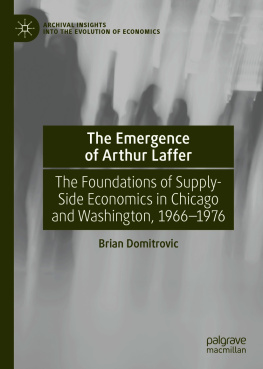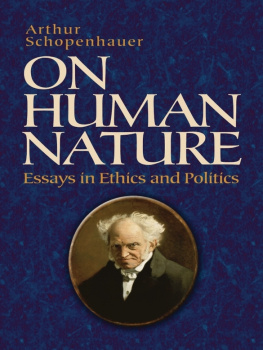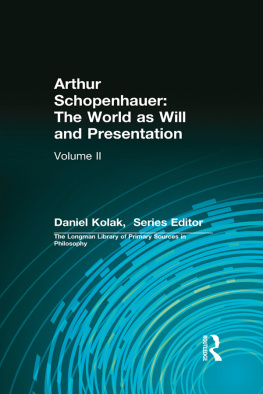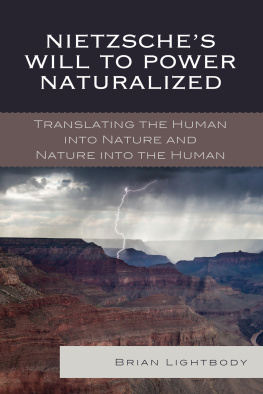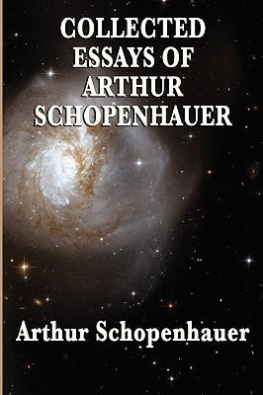W. Brian Arthur - The Nature of Technology: What It Is and How It Evolves
Here you can read online W. Brian Arthur - The Nature of Technology: What It Is and How It Evolves full text of the book (entire story) in english for free. Download pdf and epub, get meaning, cover and reviews about this ebook. year: 2009, publisher: Penguin Adult, genre: Romance novel. Description of the work, (preface) as well as reviews are available. Best literature library LitArk.com created for fans of good reading and offers a wide selection of genres:
Romance novel
Science fiction
Adventure
Detective
Science
History
Home and family
Prose
Art
Politics
Computer
Non-fiction
Religion
Business
Children
Humor
Choose a favorite category and find really read worthwhile books. Enjoy immersion in the world of imagination, feel the emotions of the characters or learn something new for yourself, make an fascinating discovery.

- Book:The Nature of Technology: What It Is and How It Evolves
- Author:
- Publisher:Penguin Adult
- Genre:
- Year:2009
- Rating:4 / 5
- Favourites:Add to favourites
- Your mark:
- 80
- 1
- 2
- 3
- 4
- 5
The Nature of Technology: What It Is and How It Evolves: summary, description and annotation
We offer to read an annotation, description, summary or preface (depends on what the author of the book "The Nature of Technology: What It Is and How It Evolves" wrote himself). If you haven't found the necessary information about the book — write in the comments, we will try to find it.
The Nature of Technology: What It Is and How It Evolves — read online for free the complete book (whole text) full work
Below is the text of the book, divided by pages. System saving the place of the last page read, allows you to conveniently read the book "The Nature of Technology: What It Is and How It Evolves" online for free, without having to search again every time where you left off. Put a bookmark, and you can go to the page where you finished reading at any time.
Font size:
Interval:
Bookmark:

W. Brian Arthur is a leading thinker in technology, the economy, and complexity science. He has been Morrison Professor of Economics and Population Studies at Stanford, and Citibank Professor at the Santa Fe Institute. He is currently in residence at PARC (formerly Xerox Parc). Arthur is the recipient of the Schumpeter Prize in Economics and the inaugural Lagrange Prize in Complexity Science.
What It Is and How It Evolves

ALLEN LANE
an imprint of
PENGUIN BOOKS
ALLEN LANE
Published by the Penguin Group
Penguin Books Ltd, 80 Strand, London WC2R 0RL, England
Penguin Group (USA) Inc., 375 Hudson Street, New York, New York 10014, USA
Penguin Group (Canada), 90 Eglinton Avenue East, Suite 700, Toronto, Ontario, Canada M4P 2Y3
(a division of Pearson Penguin Canada Inc.)
Penguin Ireland, 25 St Stephens Green, Dublin 2, Ireland (a division of Penguin Books Ltd)
Penguin Group (Australia), 250 Camberwell Road,
Camberwell, Victoria 3124, Australia (a division of Pearson Australia Group Pty Ltd)
Penguin Books India Pvt Ltd, 11 Community Centre,
Panchsheel Park, New Delhi 110 017, India
Penguin Group (NZ), 67 Apollo Drive, Rosedale, North Shore 0632, New Zealand
(a division of Pearson New Zealand Ltd)
Penguin Books (South Africa) (Pty) Ltd, 24 Sturdee Avenue,
Rosebank, Johannesburg 2196, South Africa
Penguin Books Ltd, Registered Offices: 80 Strand, London WC2R 0RL, England
www.penguin.com
First published in the United States of America by Free Press, a division of Simon & Schuster, Inc. 2009
First published in Great Britain by Allen Lane 2009
Copyright W. Brian Arthur, 2009
The moral right of the author has been asserted
All rights reserved
Without limiting the rights under copyright reserved above, no part of this publication may be reproduced, stored in or introduced into a retrieval system, or transmitted, in any form or by any means (electronic, mechanical, photocopying, recording or otherwise), without the prior written permission of both the copyright owner and the above publisher of this book
A CIP catalogue record for this book is available from the British Library
ISBN: 978-0-14-195768-5


W e are often haunted later in life by questions we could not resolve in our teens and twenties. As a rather young undergraduateI was barely 17 when I startedI was trained as an electrical engineer, and although I could score high on exams, that merely meant I had a knack for mathematics. I was aware somehow I did not really understand the essence of what I was studying: what the real nature of technology was. Our professors told us variously that technology was the application of science; that it was the study of the machinery and methods used in the economy; that it was societys knowledge of industrial processes; that it was engineering practice. But none of these seemed satisfactory. None seemed to get in any way to the technology-ness of technology, and I was left with the question unanswered.
Later on in graduate school, when I switched from engineering, I became fascinated with how the economy develops and builds out. It was clear to me that the economy was in no small part generated from its technologies. After all, in a sense an economy was nothing more than the clever organization of technologies to provide what we need. Therefore it would evolve as its technologies evolved. But if that was so, then how did technologies evolve, and where were they generated from? How did economies give birth to their technologies? What precisely was technology anyway? I was back at the same question.
For many years I gave the question little thought. But in the early 1980s my attention was drawn back to technology when I was exploring increasing returns in the economy. Technologies, in the form of new technical products and processesthink of early automobilesimproved with use and adoption, and this led to further use and adoption, creating a positive feedback or increasing returns to adoption. Increasing returns created a problem for economics. If two products (or technologies, in my case) with increasing returns competed, the one that got ahead might get further ahead and hence dominate the market. But the winner could be either one: there were multiple possible outcomes. So how does one of these get selected? The approach I developed allowed that random events, magnified by the inherent positive feedbacks, might over time select the outcome probabilistically. We could analyze increasing returns situations if we saw them as (partly) random processes. The idea worked.
To find good examples, I began in 1981 to look at particular technologies and how they had developed. These bore out my theory. But what caught my attention was something that was not connected directly with increasing returns, something that seemed vague at first. I realized that new technologies were not inventions that came from nowhere. All the examples I was looking at were createdconstructed, put together, assembledfrom previously existing technologies. Technologies in other words consisted of other technologies, they arose as combinations of other technologies. The observation was simple enough and at first did not seem particularly important. But it meant, I realized, that if new technologies were constructed from existing ones, then considered collectively, technology created itself. Later I came upon the work of Francisco Varela and Humberto Maturana on self-producing systems, and I could tell people impressively that technology was autopoietic (or self-creating). But in the mid-1980s I was not aware of Varela and Maturana. All I could do was stare at this universe of self-creating objects and wonder about the consequences of this self-creation.
Slowly it became clear that combination might be a key to figuring out realistic mechanisms of the invention and evolution of technology, things that had not been satisfactorily treated in the previous thinking about technology. Some mechanisms fell into place in the 1990sI published the idea of structural deepening in 1994and I was vaguely aware of others.
I got caught up with other questions in the 1990s, mainly with issues of complexity and cognition in the economy. And only around 2000 did I begin to think systematically again about technology and how it gets generated. I began to realize, again slowly, that other principles besides combination were at work. Technologies consisted of partsassemblies and subassembliesthat were themselves technologies. So technologies had a recursive structure. And every technology, I realized, was based upon a phenomenon, some effect it exploited, and usually several. Therefore, collectively technology advanced by capturing phenomena and putting them to use. I also began to see that the economy was not so much a container for its technologies, as I had been implicitly taught. The economy arose from its technologies. It arose from the productive methods and legal and organizational arrangements that we use to satisfy our needs. It therefore issued forth from all these capturings of phenomena and subsequent combinations.
Stalking these ideas brought me into the library stacks at Stanford, browsing for writings on technology. At first the volume of work seemed large. But on reflection I realized that it was small, curiously small, considering that the collective of technology is as large and complicated and interesting as the economy or the legal system. There were plenty of writingsand textbooks galoreon particular technologies, especially those to do with fashionable ones such as computation or biotechnology. But on the nature of technology and of innovation and of the subsequent evolution of technologies, I could find little. I found meditations on technology from engineers and French philosophers, studies of the adoption and diffusion of technologies, theories of how society influences technology and technology influences society, and observations on how technologies are designed and subsequently develop. But I was tracking something deeper. I wanted discussion of principles behind technology, some common logic that would structure technology and determine its ways and progress, and I could not find these. There was no overall theory of technology.
Next pageFont size:
Interval:
Bookmark:
Similar books «The Nature of Technology: What It Is and How It Evolves»
Look at similar books to The Nature of Technology: What It Is and How It Evolves. We have selected literature similar in name and meaning in the hope of providing readers with more options to find new, interesting, not yet read works.
Discussion, reviews of the book The Nature of Technology: What It Is and How It Evolves and just readers' own opinions. Leave your comments, write what you think about the work, its meaning or the main characters. Specify what exactly you liked and what you didn't like, and why you think so.



